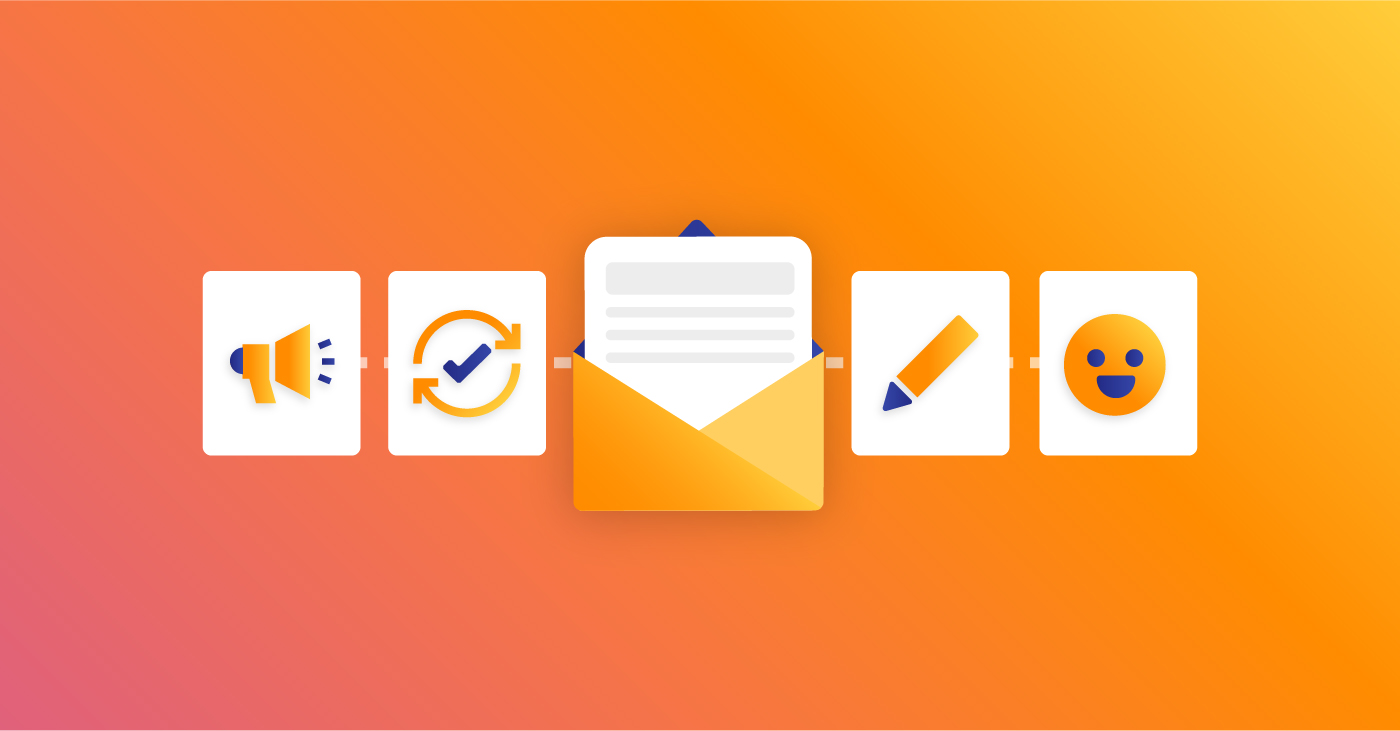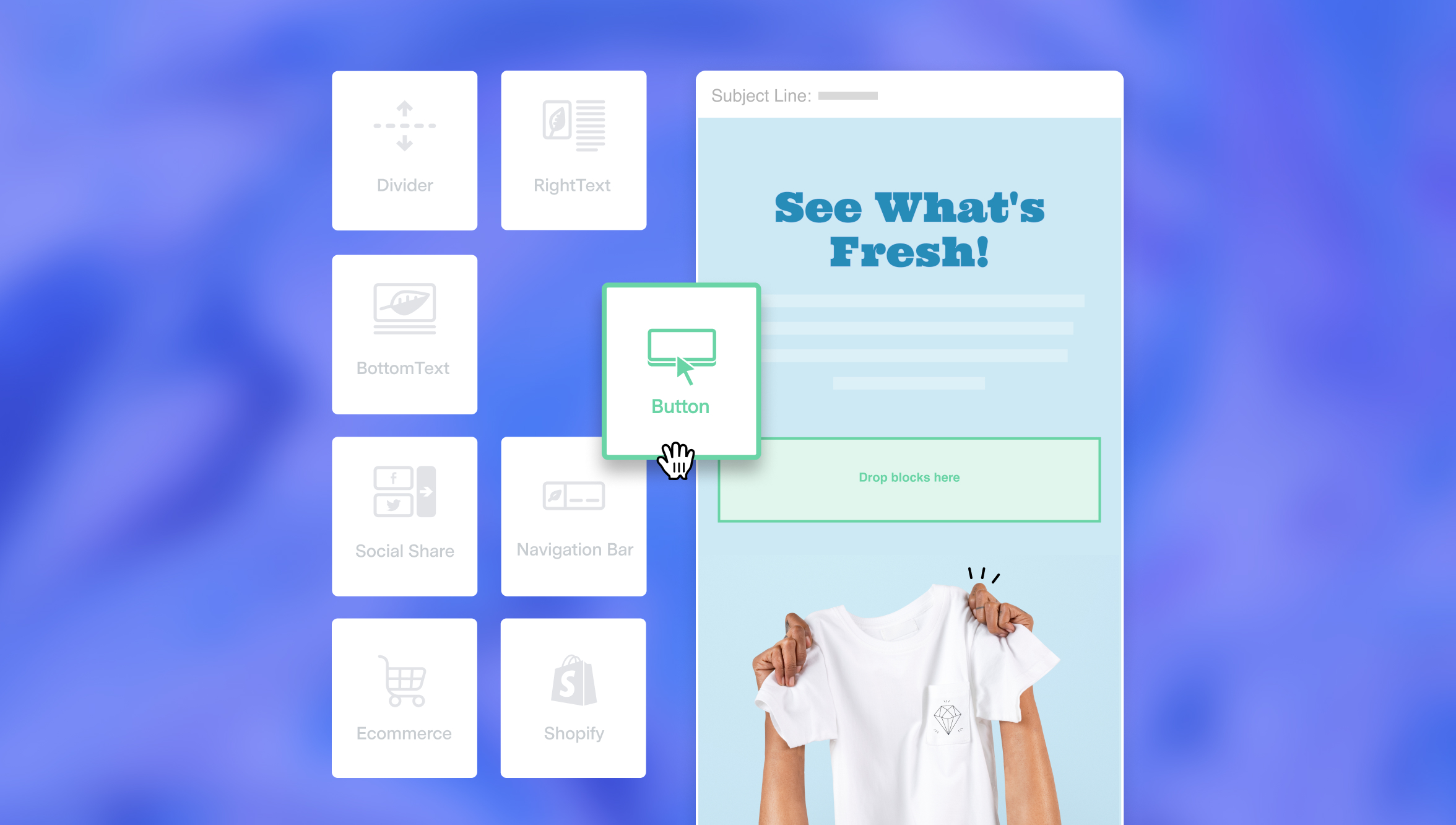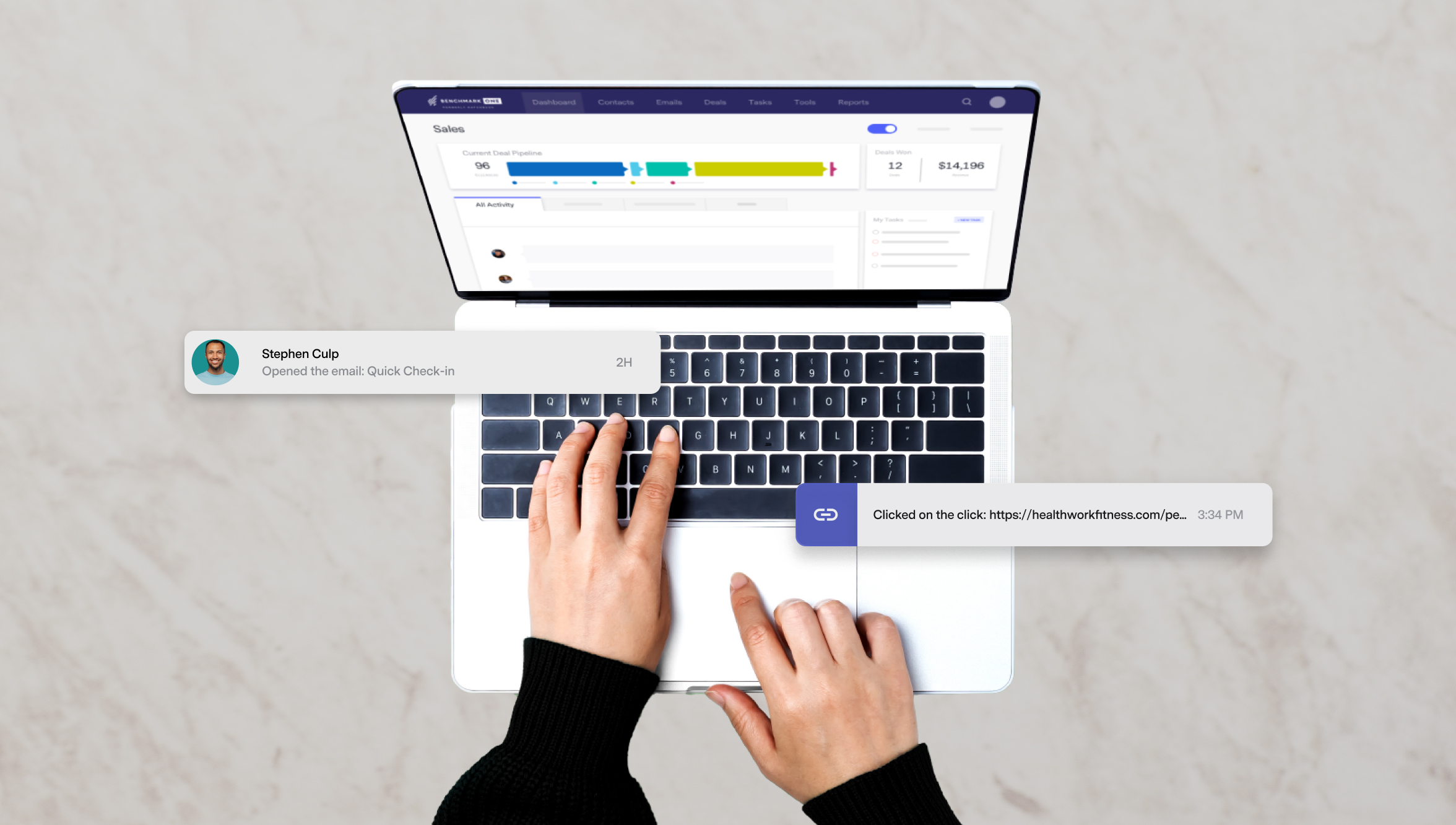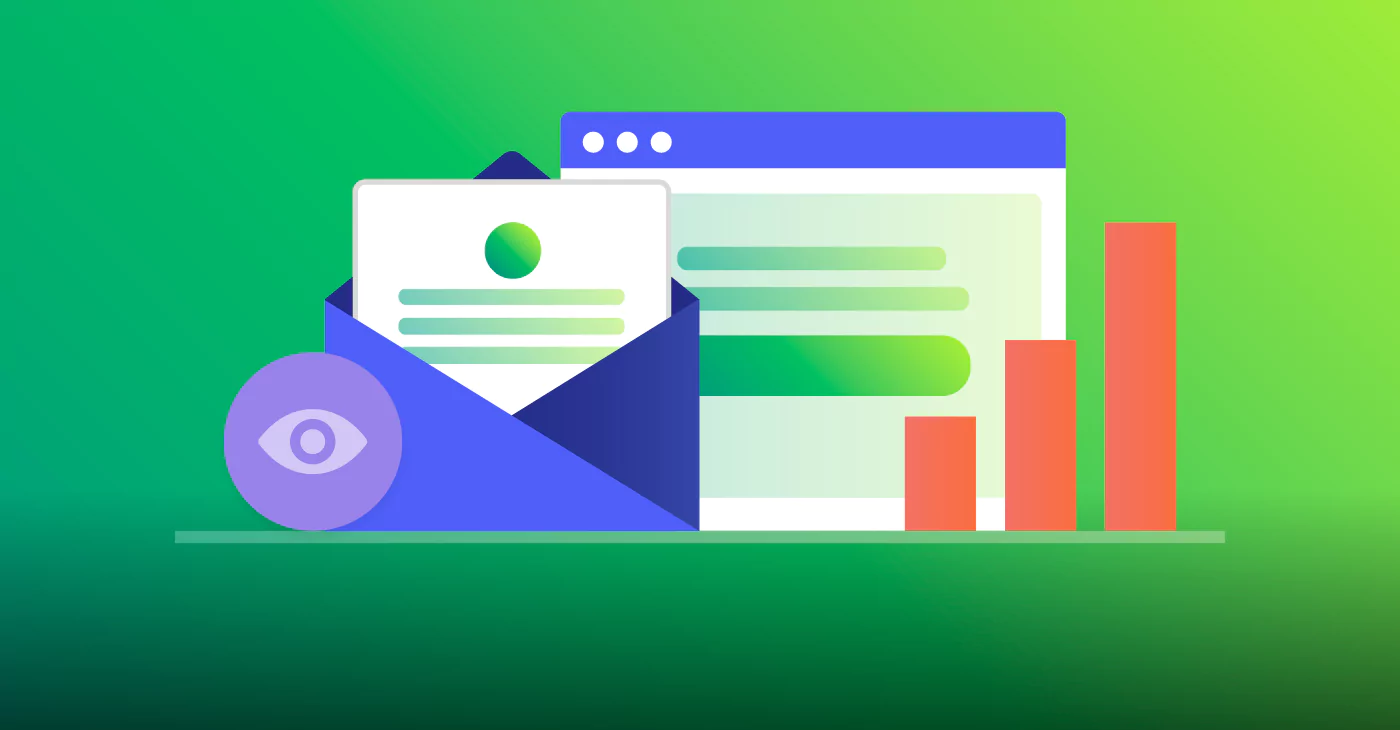The Future of Email Marketing: Trends and Predictions for the Years to Come
May 31, 2023 8 min read

Email marketing has long been a staple of digital marketing, but it’s an ever-evolving field that requires businesses to stay up-to-date with the latest trends and technologies. But with things changing so often, staying up to speed is a job in and of its own.
In this article, we’ll explore the current state of email marketing, emerging technologies that will impact the industry, and strategies for staying ahead of the game.
The Importance of Staying Up-to-Date With Email Marketing Trends
Staying up-to-date with email marketing trends and predictions is crucial for marketers who want to remain competitive and successful in their campaigns. The world of email marketing is constantly evolving, and new technologies, strategies, and trends are emerging all the time. By keeping up with these changes, marketers can stay ahead of the curve and ensure that their email campaigns are relevant, engaging, and effective.
Failing to stay up-to-date with email marketing trends can result in missed opportunities and reduced ROI. For example, if a marketer is still using outdated tactics, such as sending mass, generic emails to their entire list, they may not be seeing the same level of engagement and conversion rates as their competitors, who are using more targeted, personalized approaches. Additionally, if a marketer is not aware of emerging trends, such as interactive emails or machine learning, they may miss out on opportunities to innovate and improve their campaigns.
Staying up-to-date with email marketing trends also shows a commitment to continuous learning and improvement. The world of email marketing is always changing, and by keeping up with the latest trends and best practices, marketers can continuously refine their skills and adapt to new challenges.
Predictions for the Future of Email Marketing
Let’s examine emerging technologies that will shape the future of email marketing, such as artificial intelligence, automation, and machine learning. Let’s also explore predictions on the evolution of email marketing over the next 5-10 years, including the rise of voice-activated email and the use of augmented reality.
1. More Advanced Personalization
Personalization will continue to be a key trend in email marketing, with marketers using data and machine learning to create even more targeted and personalized campaigns.
Machine learning involves using algorithms and statistical models to analyze data and make predictions about customer behavior, preferences, and engagement patterns.
For example, machine learning can be used to analyze customer data and identify patterns in their behavior, such as the types of products they are interested in or the time of day they are most likely to engage with emails. This information can then be used to tailor email content and timing to increase engagement and conversions.
Machine learning can also be used to automate email campaigns, allowing marketers to create triggered emails that are sent based on specific customer actions or behaviors, such as abandoning a shopping cart or making a purchase. By using machine learning to predict which customers are most likely to respond to certain email campaigns, marketers can improve the effectiveness of their campaigns and increase revenue.
2. Greater Use of AI and Automation
AI and automation will become increasingly prevalent in email marketing, with marketers using these tools to automate and streamline their campaigns and deliver more personalized experiences to subscribers.
3. Increased Focus on Privacy and Data Security
As consumers become more aware of privacy concerns and data security, marketers will need to prioritize these issues in their email marketing efforts. Doing so will help them build trust and set the foundation for a long-term relationship with potential customers.
4. More Interactive and Dynamic Emails
Emails will become even more interactive and dynamic with the use of augmented reality, interactive graphics, and other technologies.
5. Continued Growth of Mobile
With more and more people accessing email on their mobile devices, marketers will need to prioritize mobile optimization and ensure that their campaigns are optimized for smaller screens.
6. Voice Activated Email
Voice-activated email refers to the use of voice commands or voice-activated assistants to read, compose, and manage email messages. This technology allows users to dictate emails, manage their inbox, and perform other email-related tasks without having to type or physically interact with their device.
The future of voice-activated email with email marketing is still relatively uncertain, as the technology is still in its early stages. However, as voice assistants such as Amazon’s Alexa, Google Assistant, and Apple’s Siri become more prevalent, it is likely that more people will start using voice-activated email to manage their inboxes.
For email marketers, this means that it will become increasingly important to optimize email content for voice-activated devices. This could involve using more natural language in email copy, incorporating more conversational language in subject lines, and creating content that is easily digestible through spoken word.
In addition, voice-activated email could open up new opportunities for personalized email experiences. For example, voice assistants could use customer data to provide tailored email recommendations or offer personalized email greetings.
7. Augmented Reality
Augmented reality (AR) is an emerging technology that overlays digital information in the real world through a mobile device, such as a smartphone or tablet. In the context of email marketing, AR can be used to create interactive and engaging experiences for subscribers.
One example of how AR could be used in email marketing is by allowing subscribers to try on virtual clothing or accessories before making a purchase. Another example is by providing 3D product visualizations that allow subscribers to see products from different angles.
The potential for AR in email marketing is vast, but it is still a relatively new technology, and there are some challenges to overcome, such as the need for specialized software and devices. However, as AR technology continues to improve and become more accessible, it is likely that we will see more brands incorporating it into their email marketing strategies.
One of the benefits of AR in email marketing is its ability to provide a unique and memorable customer experience. By creating interactive and engaging experiences, brands can build stronger connections with their subscribers and increase engagement rates.
In addition, AR can also help to increase conversion rates by allowing subscribers to see products in a more realistic and immersive way, which can help them make more informed purchasing decisions.
Overall, the future of email marketing is bright, with new technologies and innovations driving the development of more engaging, relevant, and effective campaigns.
Trends in Email Marketing
To stay ahead in email marketing, it’s essential to understand current trends and best practices. This section will cover some of the most significant trends in email marketing, such as personalization and segmentation, interactive emails, automated campaigns, and mobile optimization.
1. Personalization and Segmentation
Personalization and segmentation are becoming increasingly important in email marketing. By segmenting your audience and personalizing your emails, you can create more targeted and relevant campaigns that resonate with your subscribers.
When segmenting your email list, you can create lists based on the following characteristics:
- Industry
- Region
- Job title
- Where they are in the buyer’s journey
- Purchase history
- The content they’ve downloaded
2. Interactive Emails
Interactive emails, such as those with embedded videos or animations, are becoming more popular. These types of emails can increase engagement and provide a more immersive experience for subscribers.

3. Automated Campaigns
Automated campaigns, such as welcome series and abandoned cart emails, are becoming more common. These campaigns deploy based on certain actions, like signing up for a brand’s email newsletter or not completing a purchase. They can help to streamline the email marketing process, improve ROI, and provide a more personalized experience for subscribers.
4. Mobile Optimization
With more and more people accessing their email on mobile devices, it’s critical that email campaigns are optimized for mobile screens. This includes using responsive design and creating shorter email subject lines and copy.
5. User-Generated Content
User-generated content, such as reviews or social media posts, can be incorporated into email campaigns to increase authenticity and engagement. This also shows potential buyers how happy and engaged your customers are, which can encourage purchases and more sales.
Strategies for Staying Ahead in Email Marketing
Staying ahead with email marketing is a constant process. Here are some tips that will help you keep up.
Read Up and Go to Events
Follow industry blogs, attend conferences and webinars, and read reports to stay informed about new developments in email marketing.
Experiment With New Technologies and Strategies
Don’t be afraid to try new things and experiment with new technologies and strategies. This can include things like interactive emails, personalization, and automation.
Segment Your Audience
Segment your audience based on behavior, demographics, interests, and other relevant factors. This will allow you to create more targeted and relevant email campaigns.
Test and Measure Results
Continuously test and measure the results of your email campaigns to identify what’s working and what’s not. Use this data to make adjustments and optimize your campaigns.
Focus on Mobile Optimization
With more and more people accessing their email on mobile devices, it’s critical that your email campaigns are optimized for mobile screens.
Use Data and Analytics
Use data and analytics to understand your subscribers’ behavior, preferences, and needs. This will allow you to create more targeted and personalized email campaigns.
Create a Seamless Customer Experience
Ensure that your email campaigns are aligned with the rest of the customer journey and provide a seamless experience for subscribers.
The Future of Email Marketing and the Customer Experience
The future of email marketing and the customer experience will be all about creating a seamless and personalized experience for each individual subscriber. As mentioned earlier, personalization and segmentation will continue to be a major trend in email marketing. Marketers will need to use data and analytics to understand their subscribers’ behavior, preferences, and needs in order to create targeted and relevant email campaigns.
Ultimately, the future of email marketing and the customer experience is all about using data and technology to create a personalized and seamless experience for each subscriber. By understanding subscriber behavior and preferences and by using automation and interactive features, marketers can create targeted and relevant email campaigns that drive engagement and, ultimately, revenue.
To succeed in email marketing, businesses must stay up-to-date with emerging trends and technologies, test and measure results, and prioritize the customer experience. Marketers need to start planning for the future of email marketing and invest in their skills and education to stay ahead of the game. Good luck!





